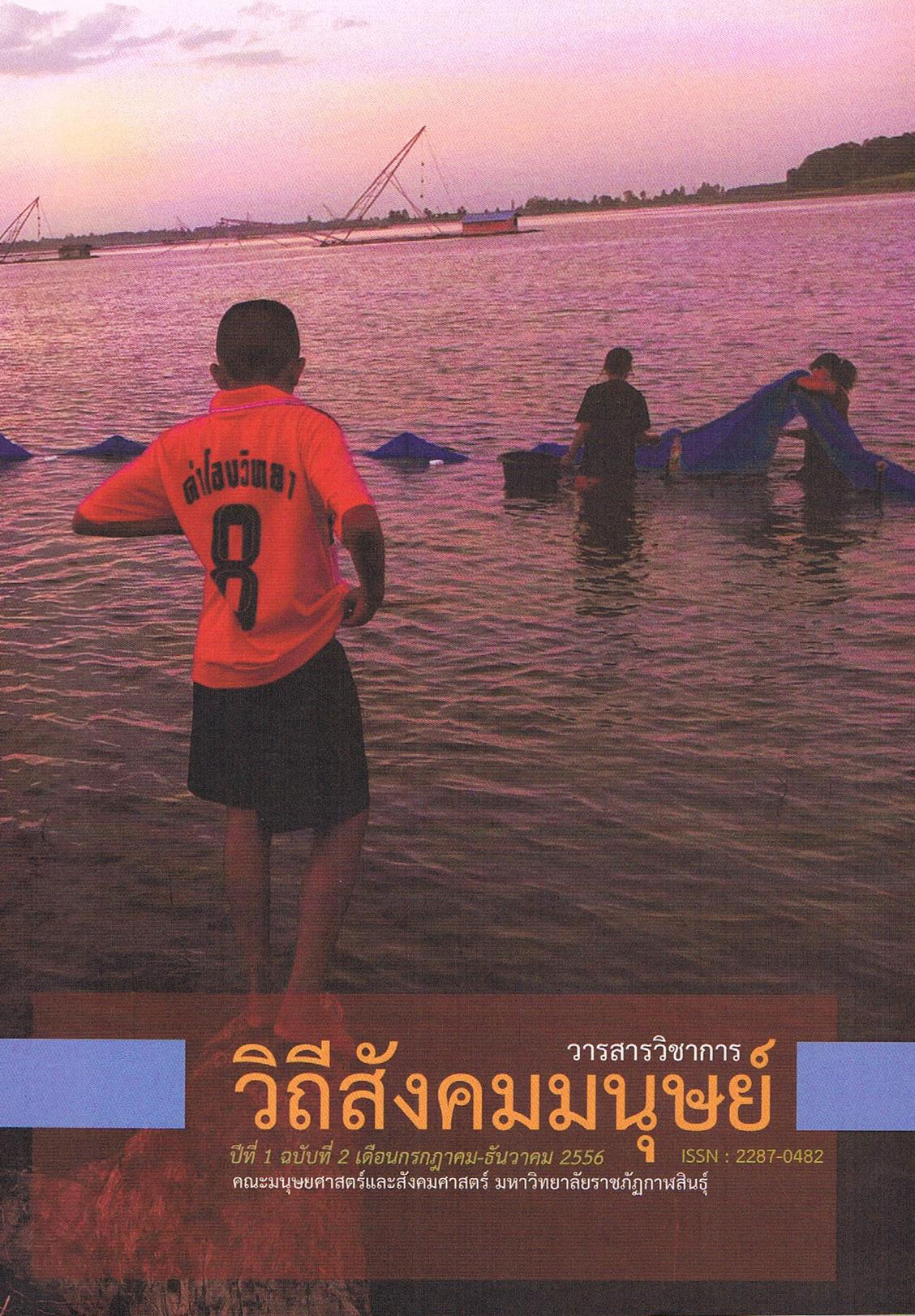การนิยามความหมายใหม่ของความเชื่อเรื่องนาค : ศึกษากระบวนทัศน์ท้องถิ่นเชิงเปรียบเทียบของกลุ่มชาติพันธุ์ ลาว-อีสานในจังหวัดนครพนมและแขวงคำม่วน (สปป.ลาว)
คำสำคัญ:
นาค/พญานาค, ตำนานและความเชื่อ, พิธีกรรม, โลกทัศน์ท้องถิ่น, Naga, Myth, Rite, Local Worldviewsบทคัดย่อ
บทความนี้ศึกษาและอธิบายความซับซ้อนของโลกทัศน์ของท้องถิ่น (local religious worldview) ที่สัมพันธ์กับความเชื่อเรื่องพิธีกรรมการนับถือบูชาพญานาคของ กลุ่มคนอีสานที่อาศัยอยู่ในพื้นที่เขตเทศบาลเมืองนครพนมและกลุ่มชาวลาวที่เกิดและ อาศัยอยู่ในพื้นที่แขวงคำม่วน สปป.ลาว บทความนี้อภิปรายว่าโลกทัศน์ท้องถิ่นเรื่องการ นับถือและบูชานาค ได้ปรับตัวและเปลี่ยนแปลงไปตามบริบททางสังคม การเมืองและ เศรษฐกิจที่เปลี่ยนแปลงไป โลกทัศน์และความเชื่อท้องถิ่นเรื่องพญานาคนั้นถูกตีความ และให้ความหมายใหม่อยู่ตลอดเวลา บทความนี้เสนอว่าบทบาทของนาคได้เปลี่ยนแปลง ไปจากผู้ปกป้องคุ้มครองพระพุทธศาสนาสู่ผู้มีอำนาจดลบันดาลให้ปัจเจกมีความมั่งคั่งทาง เศรษฐกิจและมีชีวิตเปลี่ยนแปลงไปในทางที่ดีขึ้น โดยบทบาทที่เปลี่ยนแปลงไปดังกล่าวนั้น ได้รับการยืนยันทั้งจากเรื่องเล่าประวัติชีวิตของผู้นับถือบูชานาคทั้งไทยและลาว ข้อค้นพบ ดังกล่าวสนับสนุนสมมติฐานการวิจัยที่ว่ากระบวนทัศน์ท้องถิ่นเรื่องนาคนั้นเป็นองค์ความรู้ที่มีอยู่ร่วมกันในกลุ่มประเทศอนุภูมิภาคลุ่มนํ้าโขง เรื่องเล่า ตำนานและพิธีกรรมเกี่ยวกับนาคที่คล้ายคลึงกันทั้งไทยและลาวช่วยตอกยํ้าและยึดโยงอัตลักษณ์ทางวัฒนธรรมที่มีอยู่ร่วมกันระหว่างไทยและลาว
This article studies and explains the complexity of the local religious worldview in relation to a belief and ritual practice for the Naga worship among the Lao-Isan ethnic group in Nakhon-Phanom province of Thailand, and the Laotians in Khammuane province of Lao PDR. This article argues that local religious worldview in relation to the Naga worship is re-conceptualized and re-interpreted in the new socio-economical context. This article suggests that the symbolic role of Naga, as a protector of Buddhism, has transformed into a powerful agent who can elevate individuals’ socio-economical status. This transformative role of the Naga is proved and confi rmed by the life narratives of the Naga worship’s followers in Thailand and Lao PDR. This becomes a new research fi nding, which can prove the assumption that the belief and ritual practice for the Naga worship are shared among the Greater Mekong Sub-region countries, especially Thailand and Lao PDR. The sharing of cultural practice of the two country helps re-confi rm the sharing of Thai-Lao cultural identity.


